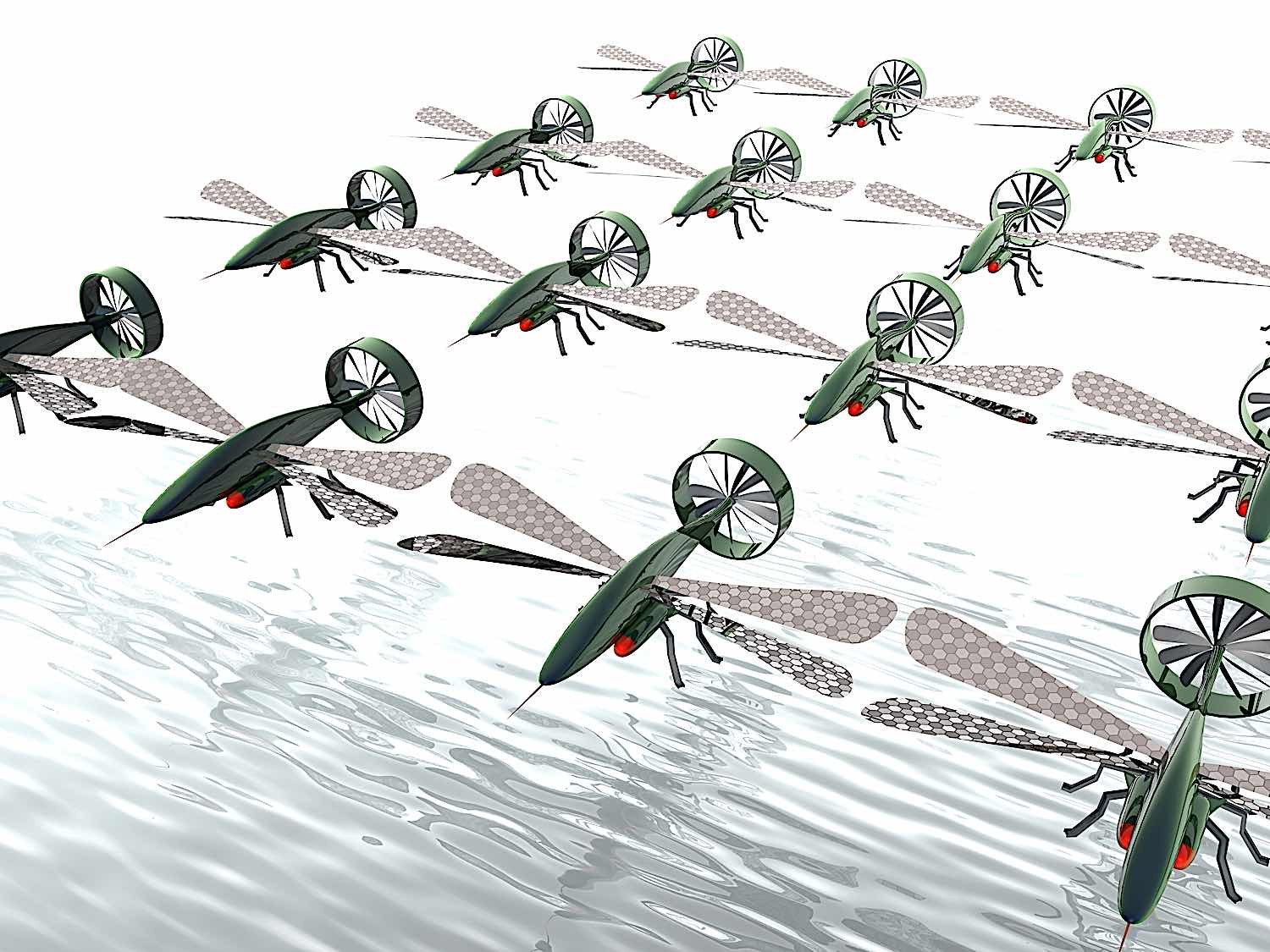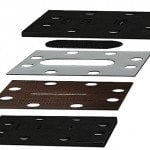In a world where technological innovations continue to shape our daily lives, a rather surprising application of technology emerges in Southern California. Here, drones—remote-controlled flying robots primarily known for aerial photography and videography—are being deployed in a fight against a formidable adversary, the mosquito.
For many, mosquitoes are merely an irritating part of life, causing itchy bites and incessant buzzing. However, these tiny insects are far more than a mere annoyance. They are potent disease vectors, transmitting illnesses such as malaria, dengue, and the West Nile Virus, which can lead to serious health consequences and even death.
Southern California, having experienced a dramatic surge in its mosquito population following an exceptionally wet winter, has been forced to address this issue head-on. Traditional methods, such as manual insecticide application and breeding site reduction, have proven insufficient. As a result, the Orange County Mosquito and Vector Control District has turned to a unique, technologically advanced solution — drones equipped with bacteria-filled spore pellets[1].
This intersection of technology and vector ecology signifies a pioneering approach to public health issues and may set the standard for mosquito control in the future. In this article, we will delve into the specifics of this strategy, exploring how drones are being utilized in this context, the potential benefits and challenges of this approach, and what this means for the future of vector control.

Deploying Drones Against the Mosquito Menace
It is indeed a sight to behold as these drones, soaring high above the serene Southern California marshes, unleash a storm of spore pellets to combat a burgeoning mosquito population. These mosquitoes, having laid their eggs in the water-filled marsh ponds, pose a significant risk of disease transmission to humans.
These drones are the latest technological tool deployed by the Orange County Mosquito and Vector Control District in their tireless efforts to contain mosquito proliferation in marshes, sizeable ponds, and parks[2]. Following an extraordinarily rainy winter, California has seen a significant increase in its mosquito population. As John Savage, who recently operated one of these drones at San Joaquin Marsh Reserve, observed, “There’s quite a bit more mosquitoes due to the rain. You can see out here almost every single marsh pond is full of water.”
In response to this surge, the District, sprawling over more than 800 square miles south of Los Angeles, has noted that its traps are capturing three times the average number of mosquitoes for the past 15 years. Kiet Nguyen, a vector ecologist for the district, described this as a “huge spike.”
Given the scale of this challenge, the District turned to drone technology for a more precise and less invasive method of controlling the mosquito menace.
The Game-Changer in Vector Control
Traditional methods of combating mosquitoes, which range from manual application of treatments with backpack sprayers to deploying trucks, airplanes, and helicopters, often involve labor-intensive and time-consuming processes. Furthermore, these techniques can be quite invasive, particularly in sensitive natural environments. The introduction of drones in this fight against mosquitoes has offered a more efficient and less disruptive solution[3].
One of the notable advantages of drones in this context is their ability to access hard-to-reach areas, a feature highlighted by Kiet Nguyen. “We’re always looking for advancements in technology— what can get the job (done) more efficient, more beneficial to the team and less invasive,” he explained. Indeed, drones are capable of flying high above nesting birds and penetrating places that would be otherwise unreachable by a person with a backpack sprayer or trucks.
This drone technology has also proven to be incredibly efficient. A single drone can treat an acre of land in under two minutes—a task that would take a worker with a backpack sprayer more than an hour to complete. This level of efficiency can significantly enhance mosquito control efforts, allowing for faster and more thorough treatment of areas infested with mosquitoes.
Advantages of Using Drones: Precision and Environmental Preservation
In the world of mosquito control, a particularly sensitive issue is the potential impact of treatments on the local wildlife and natural habitats. The use of drones, however, has been observed to cause minimal disruption to these environments.
John Savage recounted their observations, “We’ve done studies where we watched the birds, and the birds usually come right back after the drone passes over. So, if anything, it’s better for the environment.” As the drones fly above the nesting sites of birds, they avoid causing any significant disturbances to these creatures. Once a drone completes its pass, the birds quickly return to their routines, seemingly unperturbed.
Furthermore, the treatment used by the drones specifically targets mosquito larvae and is harmless to other wildlife, offering reassurance that these drone operations are not causing unintended ecological harm. The larvae of mosquitoes are filter feeders and consume the bacteria introduced by the spore pellets.
As Savage describes it, the bacteria enters the mosquito larvae’s gut and acts as a growth regulator, causing fatal damage to these pests. This precise targeting helps ensure that the solution tackles the mosquito problem without disrupting the broader ecological balance.
Safety Measures and Regulation Compliance
Regulating the use of drones is a key aspect of their implementation, particularly in sectors where they interact with public spaces or environments with delicate ecosystems. The Orange County Mosquito and Vector Control District has clearly understood the importance of this facet, implementing stringent safety measures and comprehensive regulation compliance.
The district ensures that drone operators are not just drone enthusiasts with remote controls but are indeed certified professionals. They mandate that these operators possess a Federal Aviation Administration remote pilot license. This license is evidence that they understand the regulations, operating requirements, and procedures for safely flying drones.
In addition to this, operators must also hold a California Department of Pesticide Regulation unmanned aircraft vector control technician license. This additional licensing indicates their understanding of pesticide regulation and safe application methods. As such, it demonstrates their capacity to handle the technicalities of vector control operations involving drone technology. Together, these certifications underscore a rigorous adherence to safety and expertise standards, instilling confidence in the program’s professional handling.
Furthermore, the Orange County district has a clear directive prohibiting drones from flying over residential neighborhoods. This vital rule reduces the risk of privacy invasion and potential drone-related accidents in populated areas. It further attests to the district’s commitment to ensuring the safety and comfort of the local communities while carrying out these crucial mosquito control operations.
The drone models used in these operations are chosen with specific purposes in mind. PrecisionVision 35 drones, manufactured by Leading Aerial Technologies, are used to disperse anti-mosquito treatment in either granule bait or liquid larvicide form. The district’s layered strategy, utilizing different drone models for diverse tasks, is a testament to their methodical approach. It underscores their commitment to optimizing the effectiveness of these operations while ensuring a high standard of safety and compliance with regulations.
The Battle Continues
The innovative use of drones in Southern California signifies a powerful stride in the fight against mosquito-borne diseases. By deploying bacteria-laden spore pellets over mosquito breeding grounds, drones provide a precise, efficient, and less invasive method to curb the mosquito population. This method demonstrates a notable advance in vector ecology, combining technological innovation with ecological understanding to address a global health concern.
The Orange County Mosquito and Vector Control District’s initiative offers invaluable insights that can be replicated and built upon in other regions grappling with similar issues. It presents a practical solution, balancing operational efficiency with ecological sensitivity. The commitment to ensuring minimal disruption to local wildlife and habitats even as they wage war against these pests is indeed commendable.
In the face of mounting challenges posed by climate change, this pioneering approach to mosquito control could pave the way for future advancements. As we continue to explore and leverage technological breakthroughs to tackle pressing health concerns, the fusion of drones and vector ecology stands out as a promising frontier.
The battle against mosquitoes is far from over, but with innovations like these, we can remain hopeful of making significant strides in safeguarding public health. The drone project in Orange County may just be the start of a revolution in vector control, marking a new era in our ongoing fight against mosquitoes and the diseases they spread.
Sources and References:
1 – Robots Battle Mosquitoes Interesting Engineering
2 – USA Today huge spike in mosquitoes in California
3 – ABC News Drone Deployed to Fight Mosquitoes
































